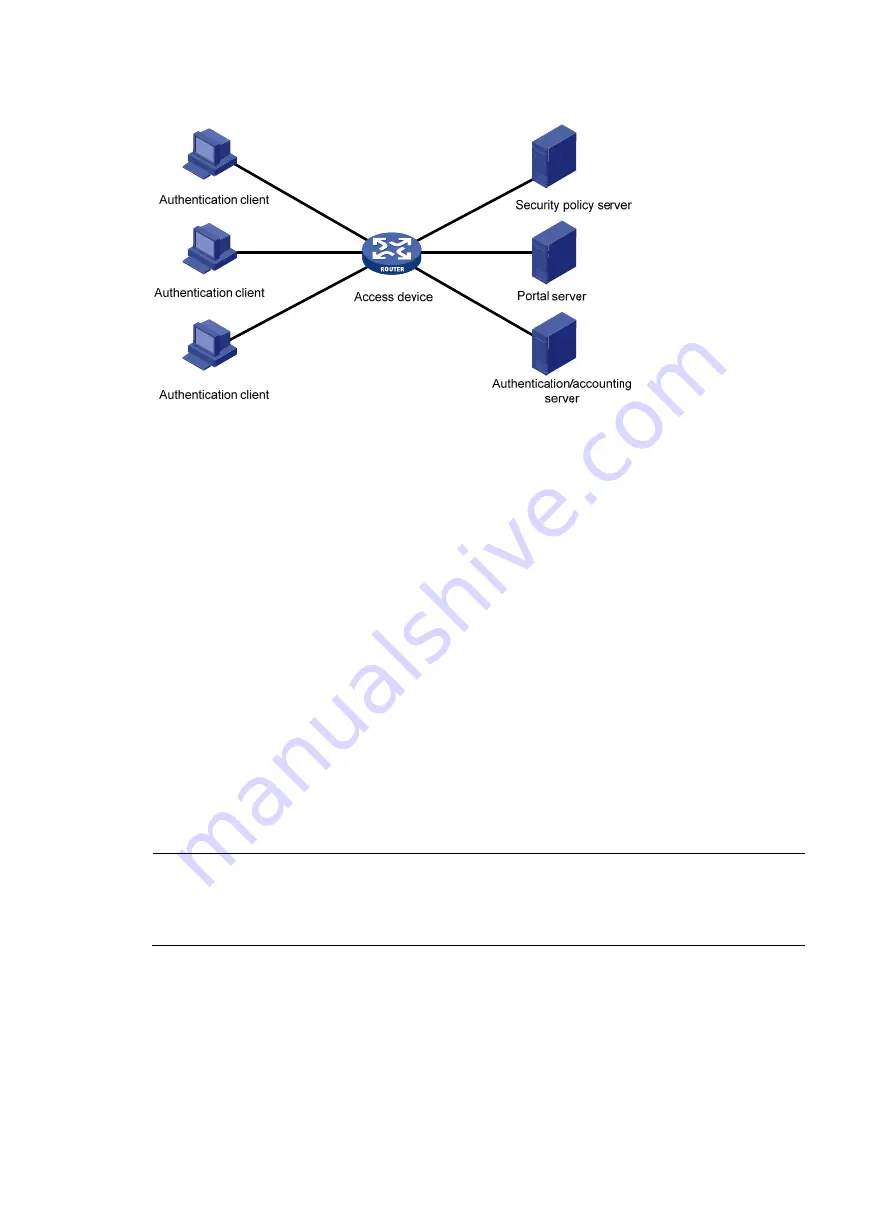
119
Figure 36
Portal system components
Authentication client
An authentication client is an entity seeking access to network resources. It is typically an end-user
terminal, such as a PC. A client can use a browser or a portal client software for portal authentication.
Client security check is implemented through communications between the client and the security policy
server.
Access device
Access devices control user access. An access device can be a switch or router that provides the
following functions:
•
Redirecting all HTTP requests from unauthenticated users to the portal server.
•
Interacting with the portal server, the security policy server, and the authentication/accounting
server for identity authentication, security check, and accounting.
•
Allowing users who have passed identity authentication and security check to access granted
Internet resources.
Portal server
A portal server listens to authentication requests from authentication clients and exchanges client
authentication information with the access device. It provides free portal services and pushes Web
authentication pages to users.
NOTE:
A portal server can be an entity independent of the access device or an entity embedded in the access
device. In this document, the term portal server refers to an independent portal server, and the term local
portal server refers to an embedded portal server.
Authentication/accounting server
An authentication/accounting server implements user authentication and accounting through interaction
with the access device.
Only a RADIUS server can serve as the remote authentication/accounting server in a portal system.
















































